
The type of worms that infect a person's internal organs are called helminths (worms). According to statistics, today about 30% of the total population is vulnerable to helminthic invasion. Worms that poison the body can infect any part of the body. This is dangerous not only for diseases that can trigger worms. Their presence in the body can be fatal.
To date, helminthiasis can be completely cured not only with drugs, but also with folk remedies. Each type has its own method of treatment. Therefore, it is necessary to know and understand what types of worms, as well as the symptoms of parasitic infections, in order to take timely action.
Classification of helminthiasis
Parasitic worms are divided into two major groups: intestinal and tissue.
The first species lives directly in the gut. This group includes:
- ringworm and cream worms;
- mine worms and lamblia;
- whip worms and dwarf tapeworms;
- bovine tapeworms and broad tapeworms;
- pig tapeworm.
Tissue worms can inhabit any organ of the human body and parasites for many years. This includes:
- cysticercus and trematodes;
- trichinella and hepatic fluke;
- echinococcus and alveococcus.
Round worms
They are the most common and complicated type of worms that live in the small intestine of adults or children. Infection with this type of helminth is called ascariasis.
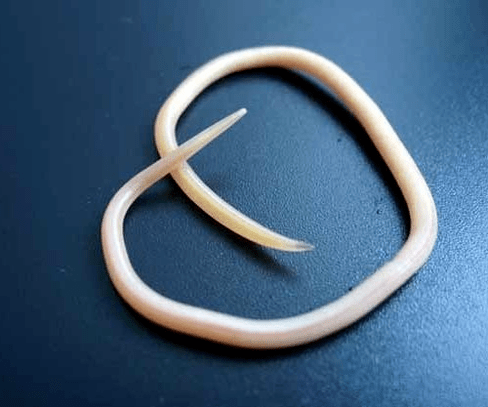
In the first days of aggression, a person begins to feel unwell, nervous, feverish, shortness of breath, cough and pain in the chest area. Such symptoms are justified by the fact that helminths initially affect the respiratory system.
Infections can occur from drinking raw water from unconfirmed sources, poorly processed fresh fruits and vegetables. In summer, the risk of ascariasis increases.
Cream worms
Small worms that settle in the intestine cause a disease called enterobiasis. The worms lay eggs in the anal area. Eggs that lay eggs turn into larvae and can enter back into the body only through the oral cavity.
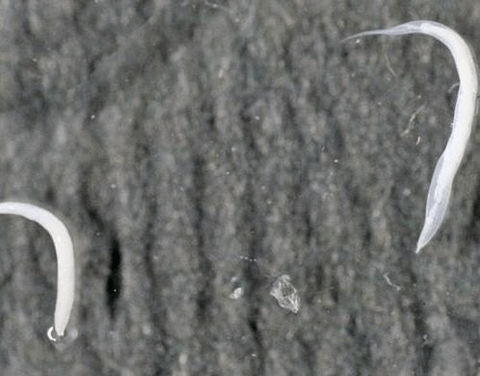
Re -infection occurs due to contact of the dirty hands of a person suffering from enterobiasis with the food he eats. Symptoms of infection may include itching around the anus and increased irritation.
Important! The disease is carried by humans.
Worms Worms
Infection with tapeworm infection occurs through damaged skin when in contact with soil, where the larvae of this type of worm live.
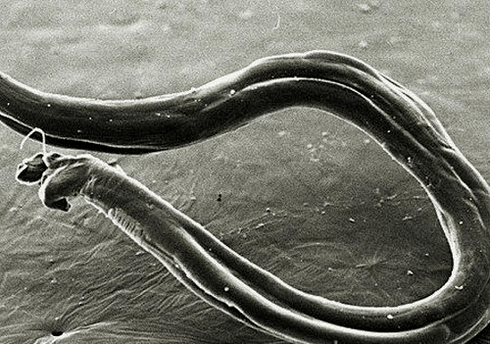
The tapeworm, before entering the intestine, follows the same path as the ringworm.
Symptoms include cough, lower abdominal pain, nausea, and stool disturbances. This type of helminthiasis can cause anemia.
Giardia
Giardiasis develops in people who have a habit of biting nails and other objects (pencils, pens). Infections can also occur if drinking low-quality water, unwashed products, contact with dirty laundry, where the larvae, and the cause of the disease.

Symptoms of infection may include loose stools and lower abdominal pain.
Vlasoglava
Trichocephalosis occurs during infection with whip worm larvae. They come in with unprocessed fruits and vegetables. Dirty hands and water are also vectors.
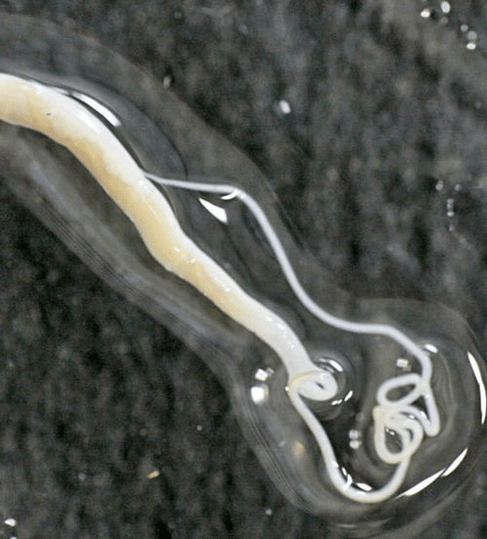
Aggression is accompanied by acute abdominal pain, diarrhea, and decreased appetite. The signs of infection are often similar to appendicitis.
Dwarf tapeworms
Infection with worms occurs not only through dirty hands and unwashed food, but insects can also be carriers.
Dwarf tapeworms affect the intestines and liver, causing inflammation and poisoning.
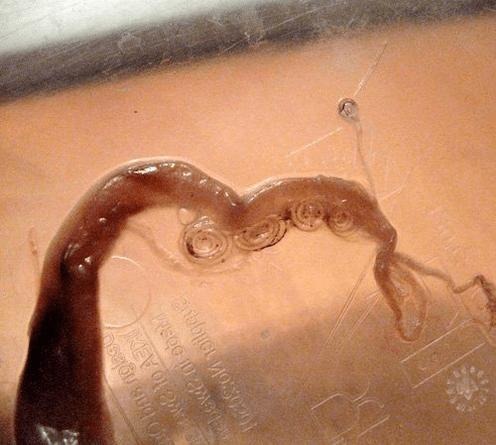
Hymenolepiasis may be accompanied by the appearance of dysbiosis, disturbed appetite, increased thirst, increased fatigue and restlessness.
Cow tapeworm
One of the most dangerous types of worms is the colon parasite.

Adult worms reach a length of several meters. The individual takes all the nutrients from the human body and produces severe poisoning.
Symptoms of aggression are:
- diarrhea and abdominal pain;
- vomiting and nausea;
- restless sleep;
- dizziness and fainting.
The risk of teniarinhoses disease arises when eating inadequately processed beef and contaminated with bovine tapeworm larvae.
Wide ribbon
The cause of diphyllobothriasis is consumption of poorly processed fish and caviar products.
The worm that causes the disease is one of the largest and can reach ten meters.

Symptoms of infection are severe pain in the lower abdomen and anemia.
Pig tapeworms
Infection with this type of helminth is very dangerous for humans. Eating pork that has not been cooked enough can cause Finns to enter the body and become adults.
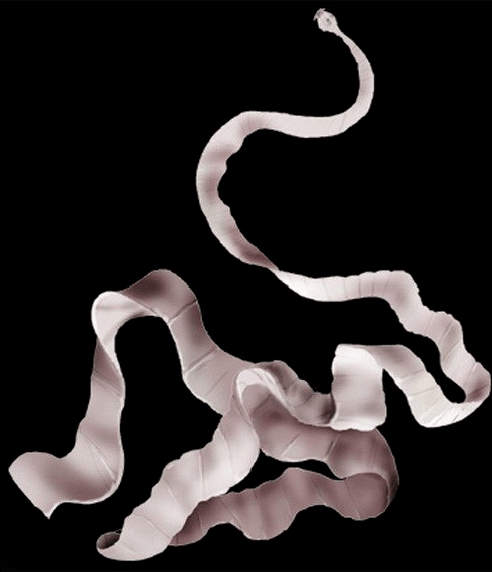
From the body of the pig tapeworm, the so -called segments are periodically separated, which can leave the body on its own through the anus or with feces, entering the environment. The symptoms of teniasis are similar to those of a bovine tapeworm infection.
Cysticerki
It is a type of tissue worm that is a product of the pig tapeworm segment. Segments containing tapeworm eggs enter the external environment and are able to re -enter the body through objects of the external environment and provoke the development of cysticercosis.
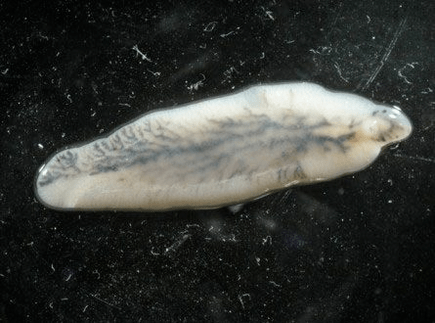
Parasites live in the muscles, myocardium and even the brain.
Important! They have a squeezing effect on organs and cause inflammation.
Hepatic coincidence
Opisthorchiasis occurs as a result of the ingestion of hepatic flux larvae along with infected fish into the human body.

Signs of the presence of opisthorchiasis:
- nausea;
- diarrhea;
- pain throughout the body;
- occurrence of allergies.
More serious symptoms are chronic. This type of parasite is dangerous for the development of liver cancer.
Echinococcus
These worms settle in the body, most often in the liver or lungs. Echinococcus can cause the formation of cysts on the affected organs and the appearance of tumors. Infections can be fatal.

Larvae are transmitted to humans through contact with sick animals.
Trichinella
Trichinosis mainly affects people who eat poorly processed wild animal meat. Pigs can also be carriers of Trichinella.
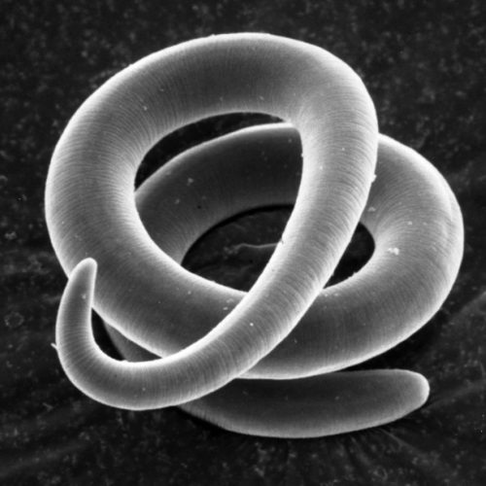
The adult habitat in the human body is various types of muscles (respiratory, facial, etc. ).
In the early stages, nausea and loose stools occur. Subsequent symptoms of aggression are fever, edema, skin rash, muscle aches. Infection with this type of parasite without timely treatment can be fatal.

Ways of human infection with helminths
- Biohelminthiasis (infection from animals).
- Helminthiasis is contagious (spread from person to person).
- Geohelminthiasis (a disease caused by a parasite that carries out one of its life cycles on earth).
Factors influencing the manifestation of helminthiasis
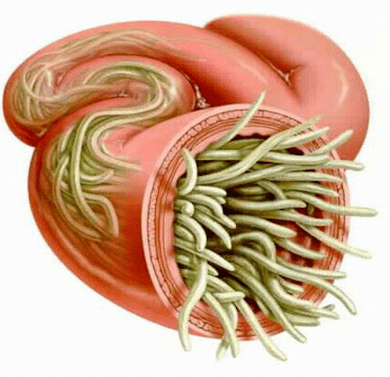
The way parasites enter the body;
- The degree of adaptation of helminths to the human body;
- Population density (number) of parasitic individuals;
- Worm habitat (tissue parasites live in soft tissue thickness, and luminals live in the interstices of hollow organs). Some helminths in different phases have luminal and tissue forms. The stage of larval and developing worms, as a rule, causes more pronounced pathological changes.
In the absence of re -infection, the number of adult parasites in the human body does not increase. This feature distinguishes helminthic invasion significantly from diseases caused by bacteria, viruses, fungi and protozoa.
Worms in humans: symptoms
Helminthiasis is a disease characterized by 2 stages of course (acute, from two weeks to two months) and chronic (from several months to several years).
Symptoms of the acute phase of helminthiasis
The first signs of the disease can appear at different times (most often after 2-3 weeks, with ascariasis-after 2-3 days, and with filariasis, the incubation period can last 6-18 months).
In the acute stage of parasitic infestation, the most typical symptom is an allergic reaction (antibodies are produced against migratory parasitic larval antigens). Often in people infected with worms, an itchy rash appears on the skin, prone to repeated travel, increased lymph nodes, general or local edema, muscle and joint pain may occur. Also, migratory parasitic larvae can cause chest pain, coughing, choking attacks, stool disturbances, nausea and vomiting.
Signs of chronic helminthiasis
The symptoms of the chronic phase directly depend on which organ is "inhabited" by the parasite, and also its size and number play an important role.

Therefore, when the parasite is in the intestine of a single individual, the disease can be asymptomatic (except for cases of infection with very large parasites). The characteristic signs of the chronic phase of intestinal helminthiasis are dyspeptic disorders. In children, asthenoneurotic syndrome and pain are more pronounced. With a massive roundworm infestation, there is a possibility of intestinal obstruction, obstructive jaundice and pancreatitis.
In people suffering from helminthiases, due to a weakened immune system and an increase in the process of cell division (as a result of the continuous restoration of damaged tissue by parasites), the risk of malignant tumors increases significantly.
Types of helminths parasites in the human body
The causative agents of human helminthiasis are 2 types of worms: round (nematodes) and flat (tape and flux).
Round worms
Cream worms
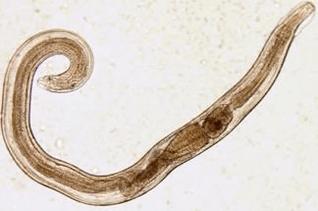
The parasites that cause enterobiasis are small thin cavity worms (up to 10 mm) with a grayish white color. Infection occurs through food (through the mouth). The reason is dirty hands. Parasite eggs can be found in soil, in the fur of infected animals, unwashed vegetables and fruits, and others. At the same time, with enterobiasis, cases of self-infection often occur (especially in children), as a result of scratches from the itchy area and subsequent swallowing of eggs. Cream worm larvae develop within two weeks in the gastrointestinal tract. After turning into adults, the worms parasitize in the lower part of the small and upper part of the large intestine.
Ascaris

Ascaris is a large reddish-yellow spindle-shaped parasite, reaching 40 cm (females) and 15-25 cm (males) in adulthood. Without a suction cup or other binding device, the ringworm can move freely towards the food mass. Eggs born to parasitic females are excreted along with feces.
Vlasoglav
Vlasoglav, the causative agent of trichocephalosis, is a white helminth parasite in the early part of the large intestine and reaches a size of 4-5 cm. Parasites feed on the blood and mucosal tissue of the rectum.
With a small number of worms, trichocephalosis is asymptomatic. At severe levels (with massive invasion), the patient experiences abdominal pain, severe diarrhea develops, sometimes accompanied by rectal prolapse. This condition is most often observed in frail children. With the moderate phase of trichocephalosis, growth retardation of the child is possible.
Trichinella

The causative agent of trichinosis is a small round helminth, 2-5 mm long. Infection occurs when eating poorly roasted meat (pork, bear meat, wild boar). Penetrating into the intestine, the parasitic larvae mature in 3-4 days to the state of sexually mature individuals. The lifespan of the worm is 40 days, after which the parasite dies. By penetrating the intestinal wall, the larvae enter the bloodstream and are carried to all organs of the human body, settling in the muscles. In this case, the respiratory and facial muscles, as well as the flexor muscles of the limbs, are most often affected.
In the first days after the invasion, the patient complained of abdominal pain. Then, after about 2 weeks, the body temperature rises to 39-40 C, an itchy rash appears on the skin, muscle pain develops, and the face swells. During this period, if a major infection occurs, there is a significant risk of death. After about a month, the patient recovered. The parasite is packaged in a spiral shape, after which it dies within two years.
Worms and nekator worms
These two parasites are similar in biological characteristics, as well as the diseases they cause. In this case, it is customary to combine it with the common name (mine worm). Worms, reaching a length of 10-15 mm, parasitic in 12-p. intestine. It should be noted that this is one of the most common, but, at the same time, the rarely detected parasiteLarva worms enter the human body through the skin when in contact with contaminated soil. Next, entering the bloodstream, they, like tapeworms, migrate to the lungs, and then, through the bronchi, along with the expectorant sputum, into the gastrointestinal tract. Parasitic ankylostoma in the intestine, attached to the intestinal wall. Therefore, the most typical symptoms of this helminthiasis are iron deficiency anemia, as well as changes in the ratio of protein breakdown (dysproteinemia).
Average worm
Wide ribbon
It is one of the largest helminths, reaching a length of 10-20 meters. The disease caused by this parasite is called diphyllobothriasis. The worm development cycle begins with freshwater fish or crustaceans. The larvae enter the human body, which is the last owner of the extensive tapeworm, along with the eggs or fillets of the infected fish. Reaching the small intestine, the parasite attaches to its walls and grows into a mature individual in 20-25 days.
Diphyllobothriasis occurs against the background of gastrointestinal disorders and B12 deficiency anemia.
Hepatic coincidence
The parasites that cause opisthorchiasis are flatworms that reach a length of 7-20 mm. Human infection occurs when eating contaminated fish meat that has not undergone adequate heat treatment. Larvae of hepatic flux from the small intestine penetrate into the bile ducts and into the gallbladder, glued there with the help of two suction cups.
In the acute phase of helminthiasis, patients experience pain in the upper abdomen, increased body temperature, nausea, developed muscle pain, diarrhea, and skin rashes may occur. The chronic course of opisthorchiasis is indicated by symptoms of hepatitis, inflammation of the bile ducts, cholecystitis, disorders of the gastrointestinal tract, nerve disorders, weakness and increased fatigue. This parasite leads to the development of irreversible changes, and even after its expulsion, the patient does not experience chronic inflammatory processes and functional disorders.
Cattle and pig tapeworms
These parasites, almost identical in structure, reach a length of 5-6 meters. Infection with teniarinhoses and teniasis occurs due to meat intake from infected cows or pigs by Finns (one of the intermediate forms of helminthiasis). Eligible Finns, presented in the form of whitish bubbles measuring 0, 5 cm, attach to the wall of the human small intestine and turn into adults in 3 months. The tape parasite, which consists of more than 2000 segments, continues to grow.
Echinococcus
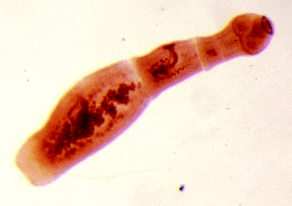
For these parasites, one is an intermediate host. This worm personifies the human body in the form of a Finnish. The last owner of echinococcus is a wolf, dog or cat. Infection occurs through food in contact with animals and with environmental objects inoculated with Echinococcus eggs. Upon entering the intestine, oncospheres (six -hook larvae) develop from them. From the intestines, they enter the bloodstream and are carried throughout the body.
Alveococcus
This parasite, which is considered a type of echinococcus, is the cause of one of the most dangerous helminthiases (alveococcosis), which is similar to cirrhosis and liver cancer. Infection occurs when oncospheres (eggs with mature larvae) penetrate the intestine. Laurocysts are very aggressive formations that always grow because of enlarged bubbles, and also have the ability to grow into the liver, like cancer metastases. Necrotic changes due to dysfunction of blood vessels undergo necrotic changes in nearby tissues. Spreading to nearby structures, alveococcus forms fibrous nodes with the inclusion of multicameral bubbles. This condition can persist for several years, and therefore requires mandatory surgical intervention.
Diagnostics of helminthiasis
Diagnostics of helminthic invasion include the following activities:
- careful collection of anamnesis, which helps determine the possible cause of infection;
- laboratory tests of stool, blood, intestinal contents 12p, rectal and perianal mucus, muscle tissue, pulmonary sputum, bile. This analysis can reveal eggs, segments or fragments of the parasite. At the same time, an increase in the content of eosinophils in the blood is also a signal of the presence of helminthiasis.
- when diagnosing diseases caused by larval or tissue parasitic levels, serological tests are performed (ELISA, RSK, indirect agglutination reactions, immunofluorescence analysis, etc. ).
- to identify worms affecting liver tissue, ultrasound, CT and endoscopic studies were prescribed.
Worms in humans: treatment
In the acute phase of parasitic infection, patients are given detoxification and desensitization therapy. In cases of severe disease (liver trematodes, trichinosis), glucocorticoids are used according to medical indications.
As a specific therapeutic drug, taking into account the nature of the pathogen, special anthelmintic chemotherapeutic agents are prescribed.
In parallel, patients are recommended to take antihistamines and enterosorbents. The final stage of treatment includes the use of probiotics that normalize the intestinal microflora.
A special soft diet is also prescribed (food should be digested and low in fat).
During the period of antihelminthic therapy, patients are required to maintain strict personal hygiene (to prevent re -infection). At the same time, for many helminthiasis, all family members and those who are in constant contact with the infected must undergo treatment.
Underestimating their dangers, combined with a lack of awareness of the biology of these creatures and the means of infection against them, has led to the fact that at least a few billion people are now carriers of certain parasites.
Parasites can also be present not only inside a person, but also outside the human body.
Prevention of parasitic attacks
Rule # 1:you should not eat anything from fish that is not salty enough, fried or boiled. Sushi, lightly salted herring, or sashimi can be considered gourmet foods. But basically it is raw fish, and fish is one component of the life cycle of parasitic worms.
How it all happened:first, the larva enters the mollusk, where it does not grow more than a certain limit, then the fish eats the mollusk, the larva enters its digestive tract, stays alive, then grows and reproduces, enters the muscle tissue of the fish, then the fish is eaten by dolphins, seagulls or polar bears. Or restaurant visitors who decide to join the high Japanese culture.
Raw fish is safe in theory. To do this, it must be frozen immediately after being caught and thawed before cooking, or it must be specially grown on a fish farm with control of the absence of parasites. But it is usually impossible to check whether a risky dish is actually prepared from it.
The same care must be taken with the meat; do not try raw minced meat and fresh salted meat.
In addition, in order not to be infected with worms, vegetables must be washed before eating, as well as by hands. As a component of the natural environment, these parasites in the human body are found widespread almost everywhere.
Any contact of food or hands with soil, dirt dust and plants can leave its microscopic eggs on the food. If they enter the intestine, the worms will hatch from the eggs, which are not easily removed.
There are parasites that attack someone who walks or relaxes in nature, for example:
- plasmodium malaria, contained in the saliva of mosquitoes of the genus Anopheles,
- encephalitis -causing agents found in the saliva of ixodid fleas,
- gadfly and wolfarth fly.
Their prevention consists of the use of all types of repellents in climbing in the wild, as well as maximum protection of open areas of the body (mosquito nets, nets, special gels).
Still, what can you do if prevention doesn’t help? Since the attack has been known for a long time, treatment with folk methods has also been known for a long time.
In conclusion, it can be noted that compliance with simple rules of hygiene and sanitation, eradication of flies and cockroaches, can significantly reduce the risk of infection with parasites, which leads to serious consequences.
























